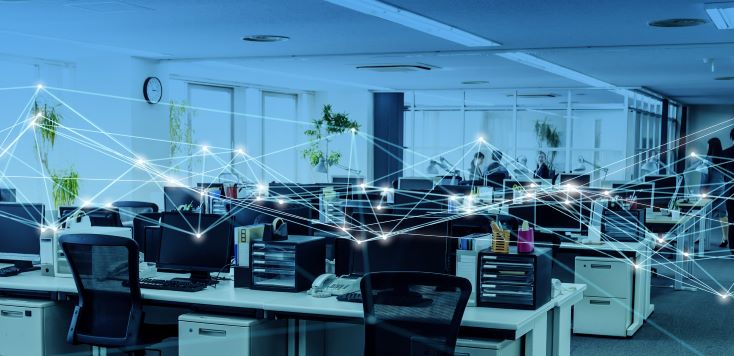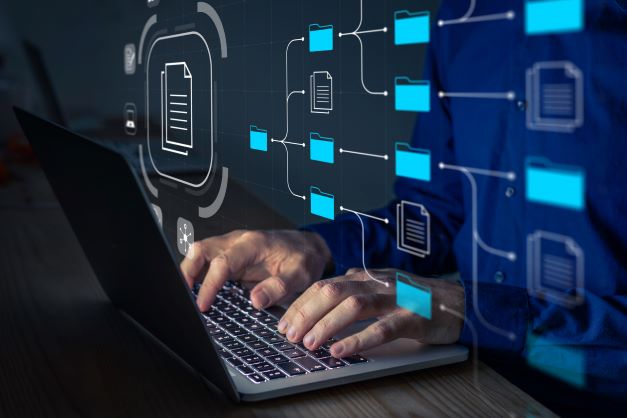Windows is the operating system of choice for most businesses. It makes sense, too. Windows offers a wide array of productivity apps with dedicated support. Windows is also super easy to use, at least most of the time. Creating and managing local accounts is an exception to Windows’ otherwise smooth experience. In fact, it’s super common for Australian businesses to hire MSPs (IT Managed Service Providers) to manage their local accounts.
What is a local account?
A local account is the password and username combination for logging into a Windows computer. Every Windows device has a local account for that device. If you have multiple Windows devices, you’ll have a default local account for each one. The local account gives you access to the system’s settings and resources. Most people use local accounts for security and changing settings and preferences.

Why should I create a local account?
There are multiple benefits of having a local account for each computer:
1. Security
A local account secures your computer from unwanted intrusion if you make a complex password.
2. Privacy
A local account prevents unwanted access to your computer’s settings and sensitive data.
3. Custom login names
You can create any login name for your local account instead of depending on your email address, which could easily be discovered.
4. Offline
Local accounts can be logged offline. So, you can change your computer’s settings without the internet. You can’t do that with a Microsoft Account.
What Is a Microsoft account?
Understandably, many people confuse local accounts with Microsoft accounts. Microsoft accounts used to be called ‘Windows Live ID’. A Microsoft account is what you use to access online Microsoft services like Xbox network, Outlook.com, and OneDrive.
Microsoft accounts are only used for Microsoft’s online services. The idea is to give you a single login credential for all online Microsoft services. In contrast, a local account is unique to your computer.
You’ll use your local account for each Windows computer and your Microsoft account to access all of Microsoft’s online services. You could use either account for storing your data, but a local account is better.
Why is a local account better?
Local accounts are better than from a security and ease-of-use perspective. For example, Microsoft accounts are hackable since they store data online. A hacker who steals your data could easily access your computer.
Microsoft accounts also need internet access. You can’t access them offline, which means you’re cut off from business data during internet downtime.
In contrast, local accounts can’t easily be hacked. They’re easier to recover, depending on how you set them up. Local accounts also don’t need internet access. So, they’re easier to use overall. Creating local accounts is also a quick and easy process.
So How do I create a local account?

These are the four easiest ways to create a new local account for your computer.
1. Settings
The best way to set up a local account is through the Settings app on your computer. For most versions of Windows, you’ll head to Start, then Settings, and Accounts. Once you’re at Accounts, click on the ‘Family & Other Users’ option on the left pane side. Next, click on ‘Add someone else to the PC’, which should be under ‘Other Users’.
A tiny window should then open up, and it’ll guide you through the account setup. If you’re prompted to sign in using an online account, select the ‘I don’t have this person’s sign-in information’ option. Microsoft will attempt to get you to create a new Microsoft account, but you can bypass this with the ‘Add user without a Microsoft account option.
Next, you’ll be prompted to the account setup screen. You’ll then just have to fill in your details for the local account, including a security question for recovery. Click on ‘Next’ once you’re done.
Congrats, you’ve now successfully created your local account. You’ll find your local account in the Account Settings menu’s Family & Other Users section.
This method is the easiest for most people. It’s also the only one that needs security questions
2. Netplwiz
Netplwiz is a control panel for managing accounts on Windows computers. Netplwiz is mostly used in older versions of Windows, but it’s still available in more recent ones. Type ‘Netplwiz’ in the Start menu search field and enter to open it.
After the Netplwiz window opens, just click on ‘Add’ to create a new local account. Netplwiz will then guide you with onscreen instructions to add the new account. You’ll have to click on the ‘Sign in without a Microsoft account option.
Select ‘Local account’ in the next window. Then, you just have to fill in the login details for your new account. This method requires you to enter a password hint instead of a security question to recover your account if you forget the credentials.
3. Computer Management
Computer Management is a built-in Windows program that provides access to all administration tools in one app. You can use it to make a local user account on your computer if you have the Pro version of Windows.
To use Computer Management, just search for the app in the Start menu. After opening it, head to the Local Users and Group section on the left pane, where you’ll see a folder titled ‘Users’. You’ll right-click on this folder and choose ‘New User’.
After that, you just have to fill in your login details. Computer Management doesn’t provide any password recovery options, so carefully choose your password. If you forget your password, you’ll have to delete the local account using an administrator account.
4. Command Prompt
Command Prompt (CMD) is the fastest way to create a local user account. You just have to enter the right code for this method.
Type ‘CMD’ in the Start menu and run Command Prompt as administrator. You won’t be able to make a new account by running Command Prompt as administrator.
Type the following code to create a new local account. Just replace ‘USER_NAME’ and ‘PASSWORD’ with your desired username and password. Hit enter, and you have a new local account.
How do MSPs help with creating local accounts?

- Software installation
- Managing permissions
- Ensuring data compliance on local accounts
- Additional security implementation
If you’re interested in potentially exploring how an MSP could help your company manage its local accounts, you can contact PowerbITs for a free consultation.